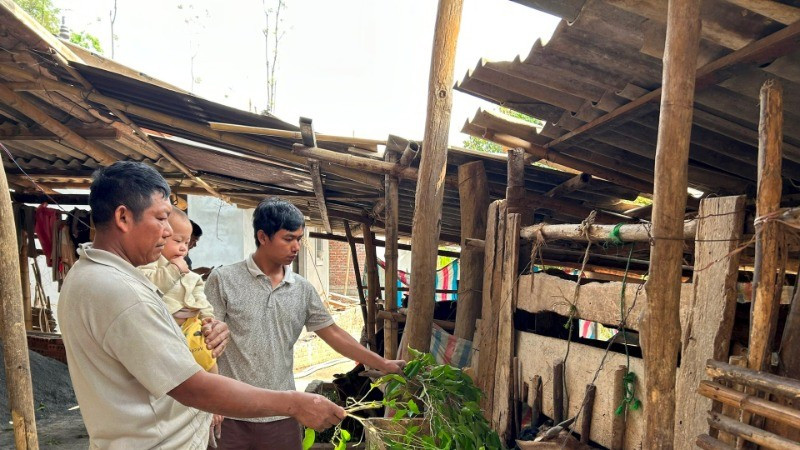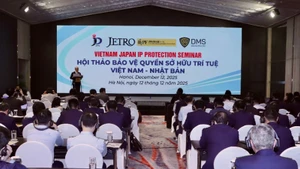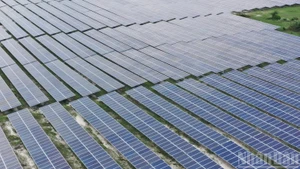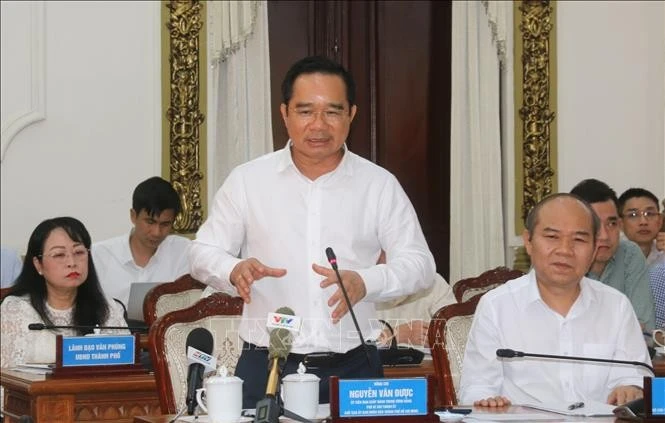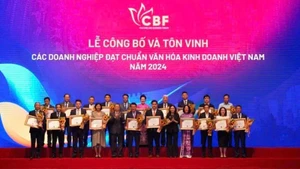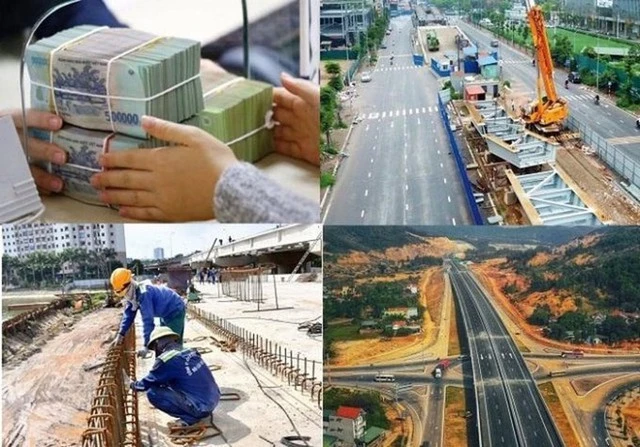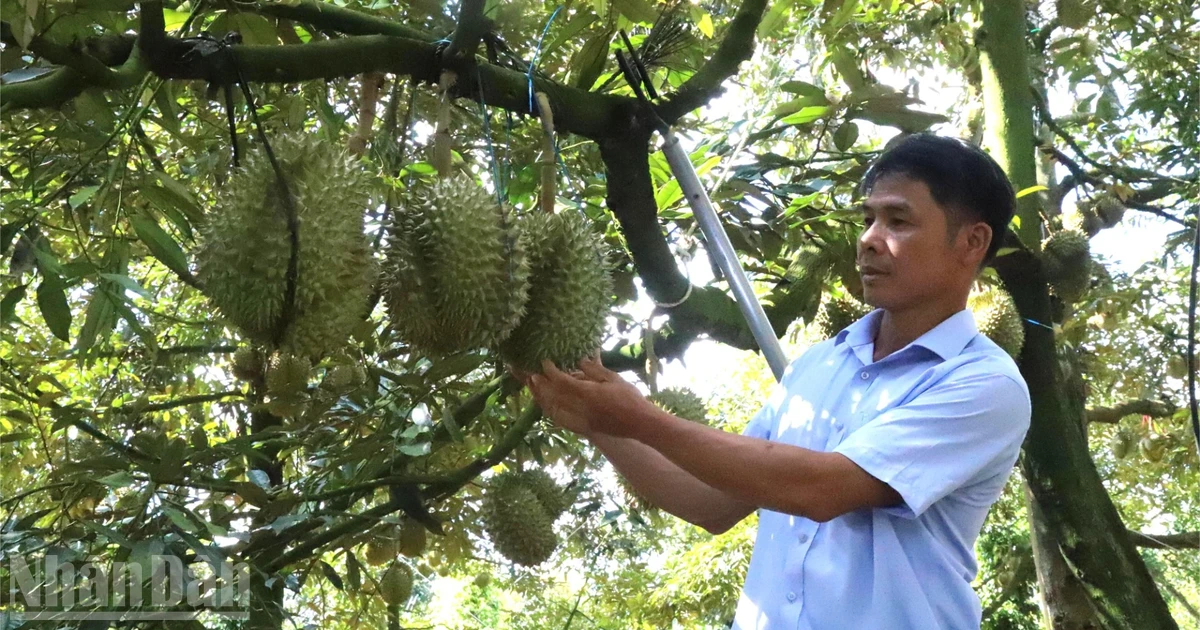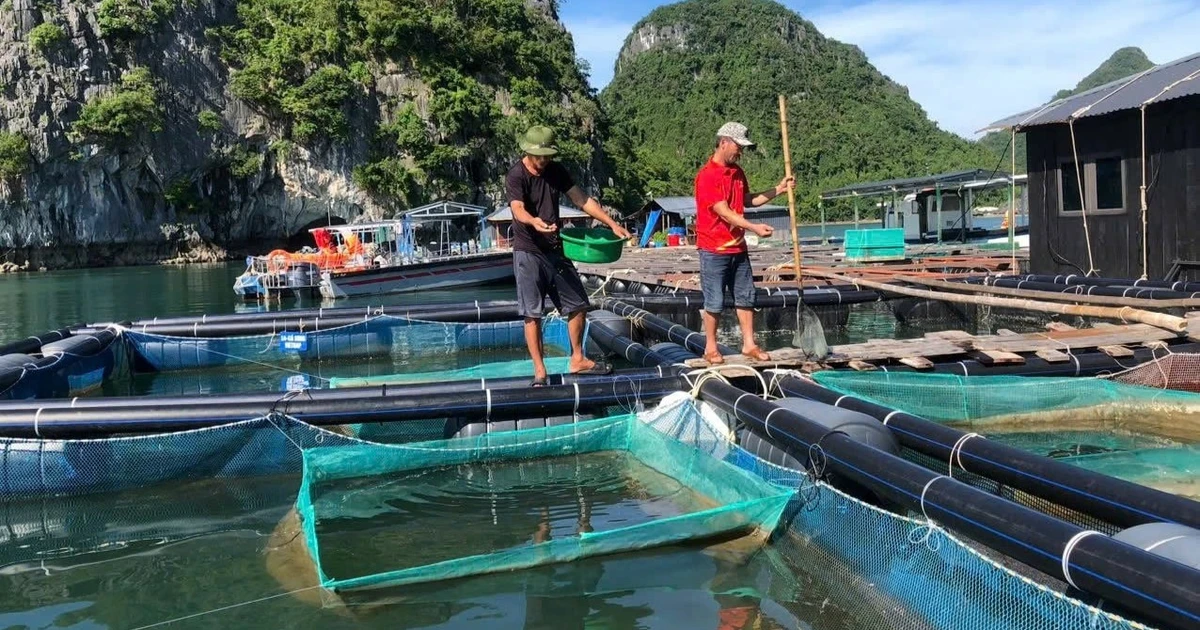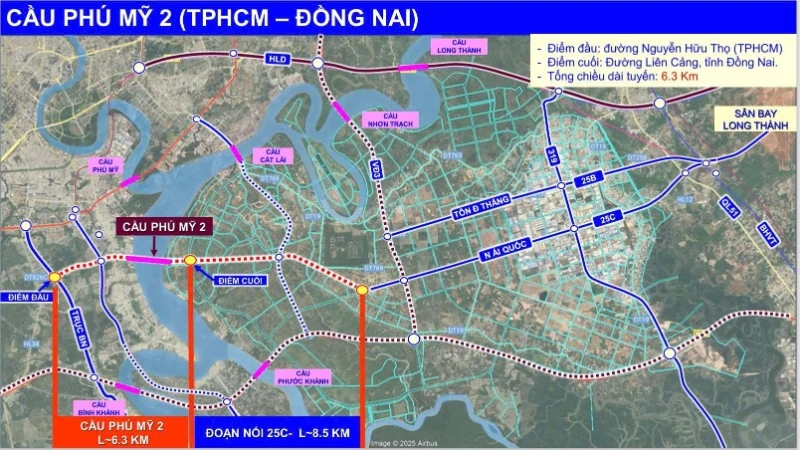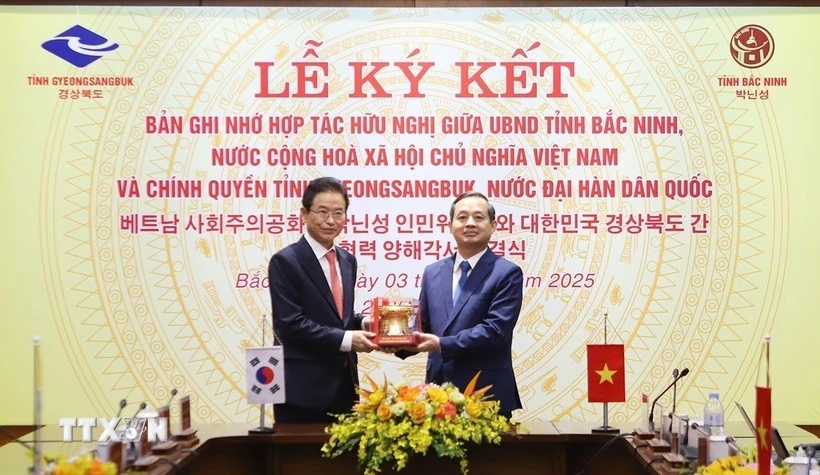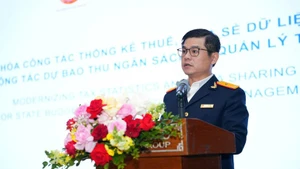However, ensuring that people living in new houses can truly achieve a prosperous and happy life while sustainably escaping poverty remains a major concern for all levels of government, sectors, and localities.
Many good and creative ways, combining and integrating sustainable hunger eradication and poverty reduction programs are still being implemented with the goal of reducing the multidimensional poverty rate from 1 to 1.5%/year; striving by 2030, there will basically be no more poor districts or extremely disadvantaged communes in the spirit of Directive No. 05-CT/TW of the Secretariat (dated June 23, 2021) on strengthening the Party's leadership in sustainable poverty reduction by 2030.
Creating long-term livelihoods
Excitedly preparing to move into his new house under the programme to eliminate temporary and dilapidated houses, Lo Van Yen, a member of the Kho Mu ethnic group in Ban Bo Ma, Nong Lay Commune, Thuan Chau District, Son La Province, shared: "My family used to be very poor, living in a dilapidated house and surviving on daily wage labour. However, in just one month, my family will be able to live in a new house. Along with the housing support of VND 60 million, at the beginning of 2025, the Government will also provide each household with a breeding cow."
According to Lo Van Thinh, Chairman of the Nong Lay Commune People’s Committee, the breeding cow donation programme for poor and near-poor households is part of the cattle breeding support project under Subproject 2 of Project 3 of the national target programme for socio-economic development in ethnic minority and mountainous areas. This project has been implemented in the commune since early 2025. A total of 193 households in the commune will benefit from this programme, with total funding of 3.4 billion VND. The initiative has helped residents establish livelihoods and rise out of poverty through their own labour.
In addition to the breeding cow support programme, authorities are also accelerating various initiatives to help people develop their agricultural production. Lo Van Thuong, 75 years old, a Thai ethnic minority member from Ban Mon, Thom Mon Commune, Thuan Chau District, Son La Province, belongs to a particularly disadvantaged family with seven members, of whom only two are of working age. His daughter is a recipient of social protection support and is unable to work. With a newly built house under the temporary and dilapidated house eradication programme, his family has also received agricultural machinery support.
Such support programmes are providing opportunities for Lo Van Thuong’s family, Lo Van Yen’s family, and thousands of other poor and near-poor households across the country to escape poverty and stabilise their lives.
Currently, Son La Province still has two poor districts: Thuan Chau and Sop Cop. The province is focusing on investment projects to develop transport infrastructure as a key lever for economic exchange, job creation, product value enhancement, and income improvement for residents in poor communes and districts. The province aims to remove Thuan Chau from the list of poor districts by the end of 2025.
Similar to Son La, Hoa Binh Province has also implemented numerous projects to support agricultural production, diversifying crops and livestock to suit local conditions. These include intercropping models in Da Bac District and Tan Lac District as well as citrus fruit cultivation in Lac Thuy District.
According to the Government’s plan, the elimination of temporary and dilapidated houses for poor and near-poor households will be completed by the end of 2025, and many provinces and cities have already achieved this goal.
For nearly a year, many Tay ethnic families in Dong Chum Commune, Da Bac District, have switched from growing cassava and maize to intercropping ginger with artichokes under a linked agricultural production model. Farmers receive partial seedling support and technical training from businesses, as well as guaranteed product purchases at harvest. This has helped significantly increase their income compared to traditional maize and cassava farming.
The intercropping model of ginger and artichokes is one of 15 market-linked agricultural initiatives currently being implemented, with a total investment of nearly 10 billion VND across 320 hectares, involving more than 2,000 households across multiple districts in Hoa Binh Province.
Organic melon growing model in Quang Tan Commune, Dam Ha District, Quang Ninh Province. (Photo: QUANG THO)
Hoa Binh has also been accelerating poverty reduction projects in 42 communes across Tan Lac, Lac Son, Yen Thuy, Mai Chau, and Da Bac districts, particularly infrastructure projects. To date, hundreds of kilometres of inter-village and inter-communal roads have been built or upgraded. Additionally, 100% of poor, near-poor, and newly escaped-poverty households in need and meeting eligibility requirements have received preferential loans from the Bank for Social Policies, while nearly all eligible individuals have been provided with health insurance support.
Implementing targeted programmes
The implementation of poverty reduction programmes in ethnic minority, remote, and poor areas has encountered various challenges. Bui Van Luyen, Chairman of the Vietnam Fatherland Front Committee of Hoa Binh Province and former Secretary of the Da Bac District Party Committee, noted that while many projects have been launched to support poverty reduction, such as loan programmes for livestock farming, freshwater aquaculture, and the improvement of fruit orchards and industrial crops, many have been ineffective. Some projects do not meet the actual needs of local people, while cultural, customary, and educational barriers have further limited their success.
Youth Union members of Soc Trang Province volunteer to help build houses for poor households. (Photo: NGUYEN PHONG)
Recently, in Tan Lac District, two projects aimed at linking the production and consumption of fresh sugarcane and chilli in My Hoa Commune were launched. However, the enterprises involved withdrew due to a lack of post-harvest storage facilities, disrupting the supply chain and halting the projects. This highlights the lack of thorough research and planning in project implementation.
In Son La Province, the investment project for information infrastructure to modernise labour market information systems, create an online job exchange, and establish a database was launched. At the beginning of 2025, a project was planned to install 206 kiosks in all communes and towns with a total budget of 16 billion VND.
However, due to the limited IT literacy of ethnic minority communities in remote areas, the project was deemed unsuitable and was therefor discontinued by the provincial government. Similar challenges have been observed in other provinces with large ethnic minority populations.
To improve the effectiveness of poverty reduction efforts and ensure sustainable poverty alleviation, in addition to the housing eradication programme, ministries, sectors, and localities must continue integrating various support programmes and policies. Special mechanisms and policies must be aligned with the projects under the National Target Programme for Sustainable Poverty Reduction, especially in poor districts and extremely disadvantaged communes in coastal and island areas.
Crucially, the disbursement of project funds must be accelerated and strictly regulated, with particular focus on livelihood support, agricultural production assistance, and direct support for the poor.
